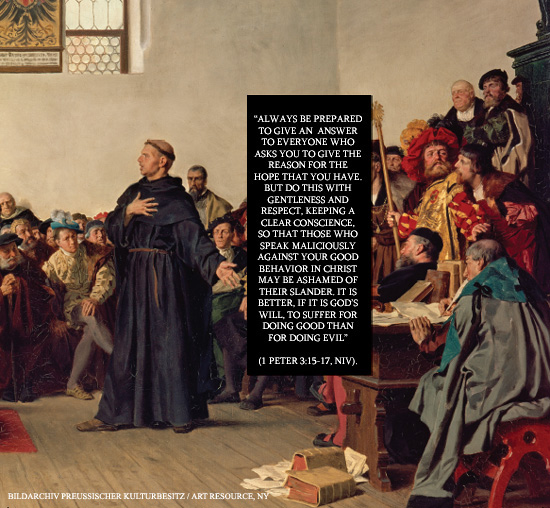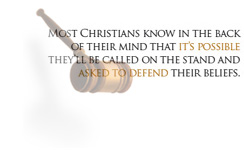Telling It Like It Is
Céleste Perrino-Walker
Getting your Trinity Audio player ready...
There's a whole lotta shakin' goin' on in Blount County, Tennessee, where folks seem hardly able to open their mouths or tap their keyboards without retracting their statements shortly thereafter. At the center of this tempest is Judge W. Dale Young, who presided in three related cases—related in that they all involved women and in that some people say his courtroom behavior went out of bounds.
Wright Was Wrong?
The case that kicked off the controversy appears to have dealt with Judge Young's dismissal of an order of protection for Kathy Wright, but the original article detailing it pulled a vanishing act when The Daily Times, which published it, printed a retraction and yanked the original article from its Web site. Suffice it to say that the Wright case has been reduced to "he said, she said," the most inflammatory point being whether or not, as one blogger accused, Judge Young actually dismissed an order of protection for Kathy Wright for domestic assault.
The Daily Times, in its retraction, says, "Any implication that the Blount County Circuit judge [Young] did not issue an order of protection despite charges of domestic assault, an indictment or criminal trial is retracted."1 The retraction further says that "regarding accusations of domestic assault against Mr. Wright, the ex-wife signed a pleading indicating there was no abuse, according to court records. The issue of physical abuse was not an issue raised by either party before Judge W. Dale Young."2 It's interesting to note that Rick Laney, the reporter who wrote the story, is not associated with the retraction. Max Crotser, the publisher, posted it.
However, according to Thomas F. Mabry, Kathy Wright's lawyer, in a post to blountviews.com, the article was retracted not because of errors in Laney's story, but because of the threat of a lawsuit. He also states that the documents in question do exist and copies were delivered by Laney to the law firm which represents The Daily Times, including: "a true bill evidencing and documenting facts of abuse against Kathy Wright by James C. Wright, and court transcripts of the order of protection hearing; documents which were and are present in the Wright file and which order of protection (including the abuse allegations since [they] were present in the file) were heard before Judge W. Dale Young."3
Act II
Before the turmoil had even settled on the troubled waters surrounding the Wright case, Judge Young was again in the spotlight for allegedly telling a Nicaraguan woman to "go back to Nicaragua." Anna (or Ana, depending on which article you read) Calixto was in Judge Young's courtroom seeking an order of protection from her husband. Reporting on this new case, Rick Laney found, "[a]ccording to Young's office, there was no clerk or court reporter present during the Calixtos' hearing and there is no transcript, recording, or documentation of what was said."4 It's hardly surprising, then, that "later, secondhand accounts of the courtroom exchange indicate that Judge W. Dale Young's admonition to the woman may not have been accurately portrayed in initial reports. . . . In the published reports, the woman said she showed the judge a temporary worker permit, but there were some at the meeting Thursday who said they understood that the woman's immigrant papers were years out of date and that Young's admonition was to go back to Nicaragua and get new, valid papers."5 Nor would it raise eyebrows that Laney, in a continuation of his initial story, writes that Calixto's current employment authorization card from the U.S. Department of Homeland Security and the U.S. Citizenship and Immigration Services Department, of which The Daily Times obtained a copy, is, in fact, valid through January 5, 2009.
The Plot Thickens
Regardless, reading about Calixto's alleged treatment at the gavel of Judge Young is what prompted Jo Anne White to call Rick Laney and offer to tell her own story. "I watched her for weeks in the paper," says White. "She didn't have court reporters; people didn't believe her story. It was this person's word against that. I knew what had happened to me in the courtroom with Judge Young, so when I heard the ACLU and other unions were going to Nashville to try to get him off the bench, I had to do something. I just couldn't stand to let this girl go through that. So, I called the newspaper, The Daily Times, and talked to Rick Laney and told him I had a story.

"It was back and forth for three weeks. I was going to do it; I was not going to do it. I didn't want it to be in the paper because of my children; that was my biggest thing. But I decided at the last minute to go ahead and go for it."
Although most Christians know in the back of their mind that it's possible they'll be called on the stand and asked to defend their beliefs, few of them actually believe it will really happen and even fewer go through the actual experience. In Judge Young's courtroom, Jo Anne White became one of those few people in the latter category. In a final divorce hearing involving the custody of her two teenage children, 16 and 17 years of age, White was asked about her religious beliefs. Extensively.
"I knew that they were going to do this," White says, "but I didn't know how hard it was going to be. I was told not much [religion] goes in the courtroom."
Between them, Judge Young and Craig Garrett, her ex-husband's attorney, asked her questions about subjects including the mark of the beast, the fourth commandment, the reformers, the Sabbath changing from Saturday to Sunday, the papacy, worship, the seal of God, and recognizing the Sabbath and keeping it holy. Though he protested many times, her own attorney, Kevin Shepherd, was unable to deter the line of questioning.
The transcript records: "Mr. Shepherd: Your Honor, I'm going to object. I feel like the court is attacking my client's religious beliefs.
The Court: I'm not attacking anybody. I just want to understand what she's talking about."6

The transcript reads: "The Court: Well, I would like to understand it, I really would, and I'm not trying to harp on you or put you in a box. But you've got to tell me—you've got to explain it to me."7
White says: "I didn't know if I was going to go to jail for not answering or what. I had no clue what would happen to me. It was about an hour. They absolutely beat me to death. They were mocking. They were having a fun time at my expense; that's what they were doing. And it lasted so long that my witnesses couldn't even get on the stand. It was the most humiliating thing I've ever been through in my life."
White believes a simple letter to the editor kicked off the whole courtroom circus. The previous summer she'd written two letters to the editor of a local newspaper after seeing several letters others had written about the Sabbath and the seal of God. In her first letter, she wrote a succinct and thorough explanation of the Sabbath. The second offered a reward to anyone who could show her where the Bible changed the Sabbath from Saturday to Sunday. It was this second letter, she says, that Garrett used to open the way for all the religious questioning to follow.
"That's where it all spun off in the courtroom," White said. "Craig Garrett brought it up." She said he asked her questions about where she went to church and then said, "Well what's up with this newspaper article?" According to White, "it just took off from there."
Did He or Didn't He?

Why, then, were her religious beliefs even an issue in the courtroom? "Well, that's what bothered me," says Shepherd. "It really wasn't an issue, and my concern was that Jo Anne really felt mocked. You could tell by watching her on the stand that she was feeling very uncomfortable. And I think she truly felt that she was being attacked."
The Bottom Line
While White's ordeal might not stand up under the legal definition of persecution, most people would probably agree that what she went through would classify as religious persecution to them any day of the week if they were the ones on the stand going through it. The irony of it is that although the case wasn't even about religion, that was nevertheless the main topic of conversation.
"I gave an hour-long Bible study course to a judge in a courtroom where church and state are supposed to be separated," says White. "That's the bottom line."
This tempest, like others, will eventually blow over. Life will get back to what passes for normal. But don't be surprised if the tempest jumps from the teapot straight into your own cup. Life is like that, as Jo Anne White can testify. It pays to be prepared and to consider how you might defend your hope when the time comes.
C